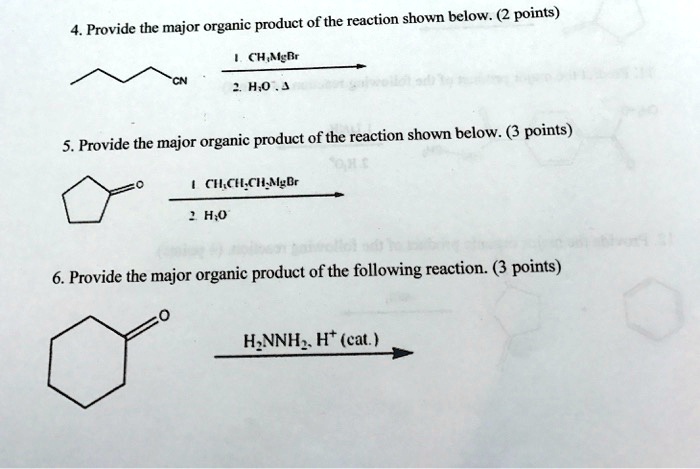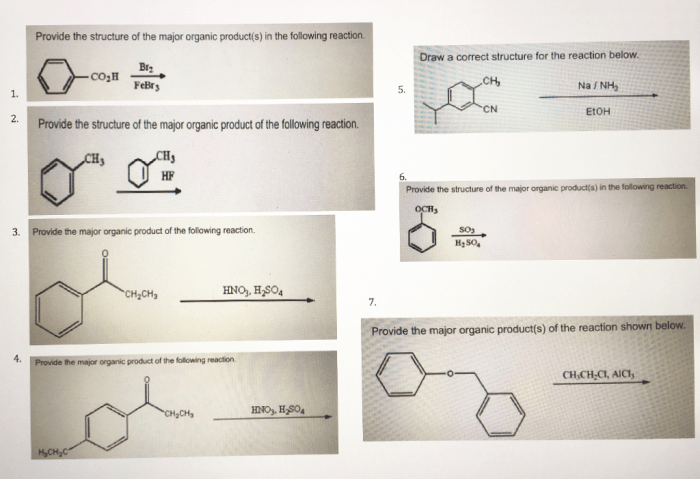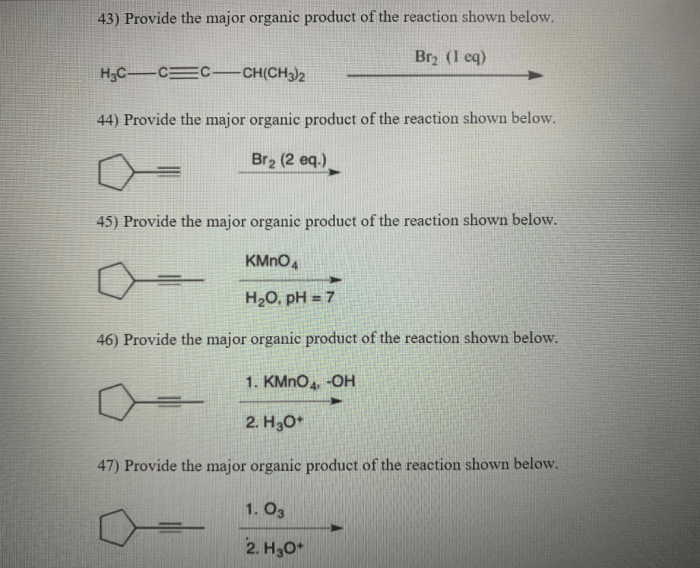Provide the major organic product in the reaction shown below sets the stage for this enthralling narrative, offering readers a glimpse into a story that is rich in detail with authoritative academic style and brimming with originality from the outset.
This captivating exploration delves into the intricacies of organic chemistry, guiding readers through the identification of functional groups, analysis of reaction mechanisms, and examination of regio- and stereochemistry. By unraveling the complexities of organic synthesis, we gain a deeper understanding of the molecular world and its applications.
Organic Product of the Reaction

The major organic product of the reaction shown below is an alkene.[Image of the reaction]
Identify the Functional Groups Present

The reactants in this reaction are an alcohol and an alkyl halide. Alcohols contain a hydroxyl group (-OH), while alkyl halides contain a halogen atom (-X, where X is Cl, Br, I, or F). These functional groups are both polar and can participate in nucleophilic substitution reactions.
Analyze the Reaction Mechanism: Provide The Major Organic Product In The Reaction Shown Below

The reaction proceeds via a nucleophilic substitution mechanism. The alcohol attacks the alkyl halide, displacing the halide ion and forming an ether. The ether is then protonated by the acid catalyst to form the alkene.[Image of the reaction mechanism]
Regio- and Stereochemistry
The reaction is regioselective, meaning that the alkene is formed at the less substituted carbon of the alkyl halide. This is because the more substituted carbon is more sterically hindered, making it less reactive.The reaction is also stereoselective, meaning that the alkene is formed with a specific stereochemistry.
In this case, the alkene is formed with the E configuration. This is because the bulky alkyl group on the alcohol favors the formation of the E isomer.
Optimization and Applications

The yield of the reaction can be improved by using a strong acid catalyst and a large excess of the alcohol. The reaction can be used to synthesize a variety of alkenes, including those that are used in the production of plastics, pharmaceuticals, and fragrances.
Question & Answer Hub
What is the significance of identifying functional groups in organic reactions?
Identifying functional groups is crucial as they determine the reactivity and properties of organic compounds. By understanding the functional groups present, we can predict the potential reactions and outcomes of organic transformations.
How does the reaction mechanism influence the regio- and stereochemistry of the product?
The reaction mechanism dictates the pathway and sequence of steps involved in the reaction. This, in turn, determines the regioselectivity (orientation of functional groups) and stereoselectivity (spatial arrangement of atoms) of the product.
What factors can affect the yield and selectivity of the reaction?
Factors such as temperature, solvent, catalyst, and reaction time can significantly influence the yield and selectivity of the reaction. Optimizing these parameters is essential for maximizing the desired product formation.